In modern industrial process control, level switches are critical for ensuring that liquid and solid materials are maintained at the proper level within vessels. Whether in a chemical plant, food processing facility, or water treatment system, level switches play an integral role in maintaining efficient and safe operations. In this article, we will take an in-depth look at the types of level switches, how they work, and their applications across various industries.
Types of Level Switches and How They Work?
Float Level Switch
This is the most classic level control switch (KEY-5 Liquid Float Level Switch) that operates a mechanical switch by means of a float that floats on the surface of the liquid. When the liquid level is raised or lowered to a specific position, the float moves and triggers the switch action.

Capacitance Level Switch
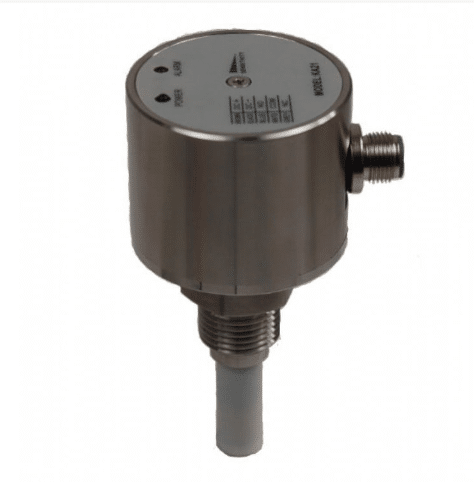
The capacitance change between the electrodes is utilized to monitor the liquid level. When liquid or solid material comes into contact with the electrodes, changing the capacitance value between the electrodes, the system detects the change in liquid level. This type of switch is suitable for precise measurement and can be used for a wide range of media.
Ultrasonic Level Switch
The liquid level is detected by transmitting and receiving ultrasonic pulses. The reflection time of the ultrasonic waves varies according to the level of the liquid, thus determining the exact position of the material. This non-contact measurement method is suitable for corrosive or contaminated environments.
Conductive Level Switches
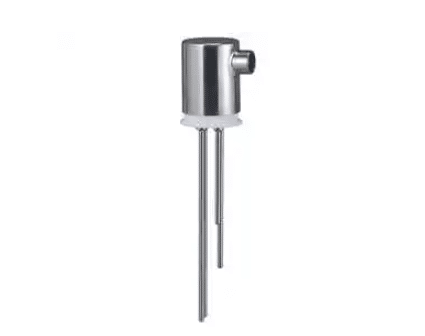
Especially suitable for conductive liquids, such as brine or acid. They determine the level by detecting if the liquid completes the circuit.
Vibrating Fork Level Switches
Sense the liquid level by means of a pair of vibrating forks. When material touches the vibrating forks, the frequency of vibration changes, which triggers the switch. This type of switch is particularly effective for viscous or solid-containing media.

Optical Level Switch
Uses a beam of light (usually infrared) to determine the liquid level. The switch is triggered when the liquid or solid blocks the light. Optical switches are ideal for small or compact installations.
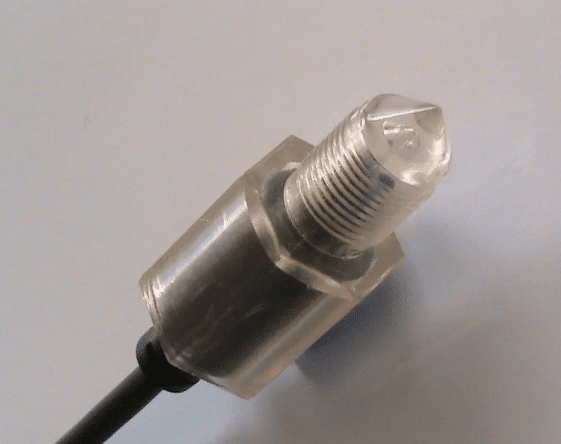
Magnetostrictive Level Switch
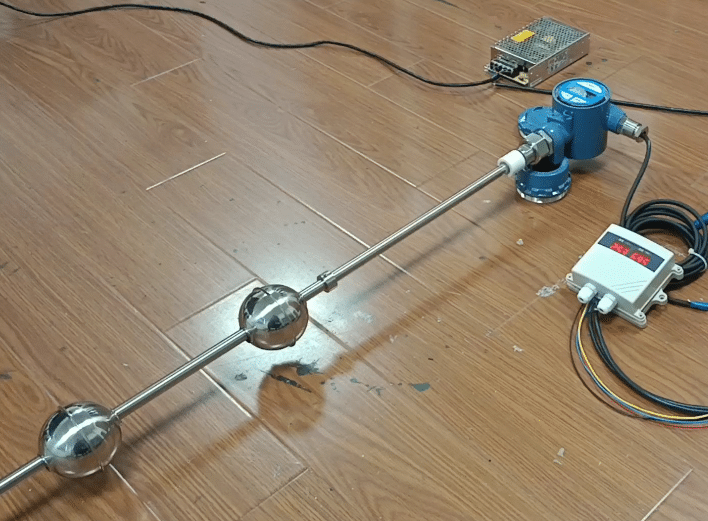
This highly accurate switch utilizes the phenomenon of magnetostriction to determine liquid level. As the magnetic float within the liquid moves, it changes the magnetic field with which it interacts, creating a magnetostrictive effect. This type of switch is especially suited for high-end applications that require very precise measurements, such as petroleum and chemical storage tanks.
Paddle Level Switches

Paddle switches monitor liquid level by means of a rotating paddle. When the paddle is covered or contacted by a liquid or solid material, its rotational speed or resistance changes, which triggers the switch. This type of switch is suitable for liquids with large particles or high viscosity, such as wastewater treatment or food processing applications.
Stick Level Switches
Stick level switches detect liquid level by means of one or more sensing rods placed vertically or at an angle. These rods trigger the switch by an electrical signal change when the material comes into contact. They are ideally suited for use in harsher environments with restricted space, such as high temperature or high pressure environments for level monitoring.
Thermal Level Switches
These switches utilize a temperature sensor to detect liquid level. When in contact with the liquid, a change in the temperature of the sensor triggers the switch to act. Thermal level switches are particularly suited to applications where the temperature and level of the liquid needs to be monitored, such as hot water systems or chemical processes where temperature changes are closely related.

Tilt Level Switches
These switches use a tilt sensor to detect liquid level. When the liquid tilts the sensor to a certain angle, the switch is triggered. Tilt switches are ideally suited for monitoring the level of irregularly shaped vessels, or for applications where changes in level in the environment may cause the vessel to tilt, such as liquid storage on mobile equipment or vessels.
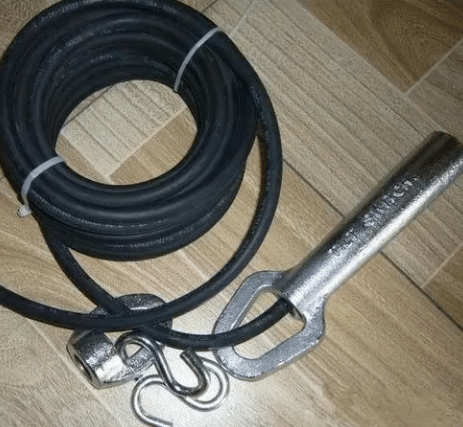
Tuned Fork Level Switches
These switches utilize two electronically vibrating fork elements to sense liquid level. When the liquid comes into contact with the forks, the frequency or amplitude of the vibration changes, which triggers the switch. Because of their high sensitivity to changes in the medium and their immunity to interference from external factors, tuned fork level switches are particularly suited to applications in the chemical and pharmaceutical industries where high levels of accuracy are required.

Specific Applications of Level Switches
| Level Switch Type | Specific Applications |
| Float Level Switch | Water treatment, oil tanks, and general liquid storage |
| Capacitive Level Switch | Various liquids and powdery materials, especially suitable for media with changing dielectric properties |
| Ultrasonic Level Switch | Clean or contaminated liquids, commonly used in water treatment and chemical industries |
| Conductive Level Switch | Conductive liquids, such as brine or acidic solutions |
| Vibrating Fork Level Switch | Viscous liquids and powdery materials, such as liquid foods or chemical raw materials |
| Optical Level Switch | Small or compact spaces and clean liquids, like laboratory equipment |
| Magnetostrictive Level Switch | Precise level measurement, suitable for storage of oil and chemicals |
| Tilt Level Switch | Level monitoring on mobile equipment, such as boats or special vehicles |
| Tuning Fork Level Switch | High precision and fast response situations, such as in chemical and pharmaceutical industries where accuracy is crucial |
| Paddle Level Switch | Liquids with large particles or high viscosity, such as in wastewater treatment or food processing |
| Rod Level Switch | Harsh environments and confined spaces, such as high temperature or high pressure level monitoring |
| Thermal Level Switch | Applications that require monitoring both liquid temperature and level, such as hot water systems or temperature-sensitive chemical processes |
Energy Consumption Analysis of Level Switches
Although level switches are not energy-intensive devices per se, their operation throughout the system still involves energy consumption, especially in industrial environments with continuous operation.
Energy Consumption Factors of Common Level Switches
- Power consumption: Most level switches, such as capacitive, ultrasonic and photoelectric level switches, rely on a power supply to operate. Continuously operating electronic components, sensors and signal processing systems consume a certain amount of power.
- Mechanical switching energy consumption: such as float level switches, although their energy consumption is extremely low and they rely mainly on mechanical movement to work, they still lead to an increase in indirect energy consumption when they are coupled with other motorized parts of the system (such as pumps or valves).
- Signal processing and transmission: In modern automation systems, level switches transmit signals through PLC, SCADA and other systems, a process that requires data transmission, processing and storage, indirectly increasing the overall energy consumption of the system.
Technical Measures to Reduce Energy Consumption
- Intelligent sleep mode: Some level switches can be programmed with a sleep mode to save power by turning off some functions when the level is in a stable state or when real-time monitoring is not required.
- Optimized sensor design: The daily energy consumption of level switches can be significantly reduced by using low-power sensors and electronics. This is especially important in Internet of Things (IoT) level switch design.
- Wireless technology applications: Energy losses due to physical wiring are reduced through wireless communication technology, especially in remote monitoring and distributed systems.
Summary
Level switches are an essential tool for monitoring and controlling the level of liquids and solids in industrial processes. Whether you are dealing with a simple tank or a complex chemical storage system, choosing the right type of level switch is critical to ensuring safe and efficient operation. By understanding the different types, operating principles and applications, you can make informed decisions that enhance process control and increase productivity.
Apure offers level switches as well as level meters, level sensors, and level transmitters. In addition to this, we also provide water quality monitoring instruments, flow measurement instruments, temperature and pressure measurement instruments. If you need, please contact us.
